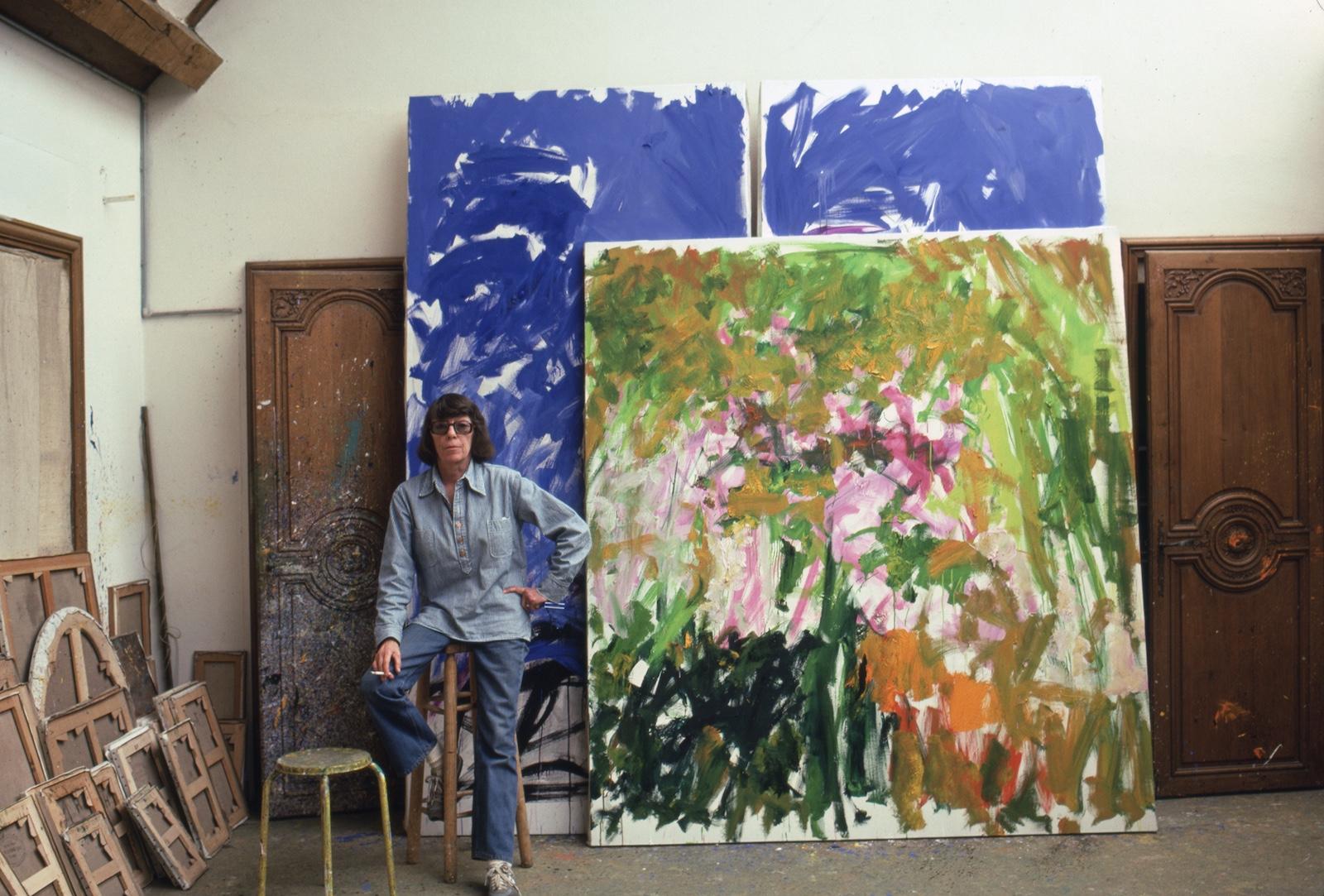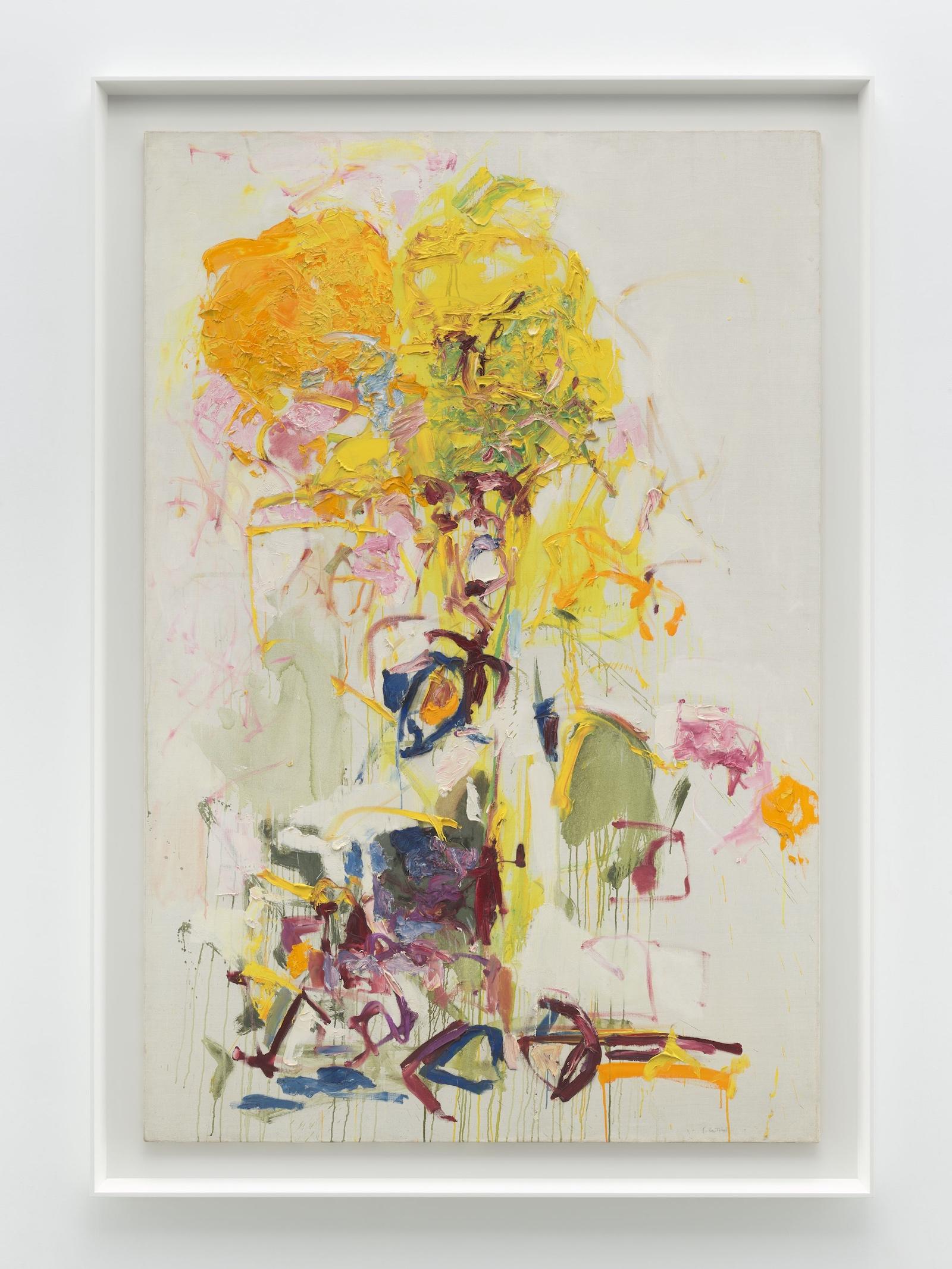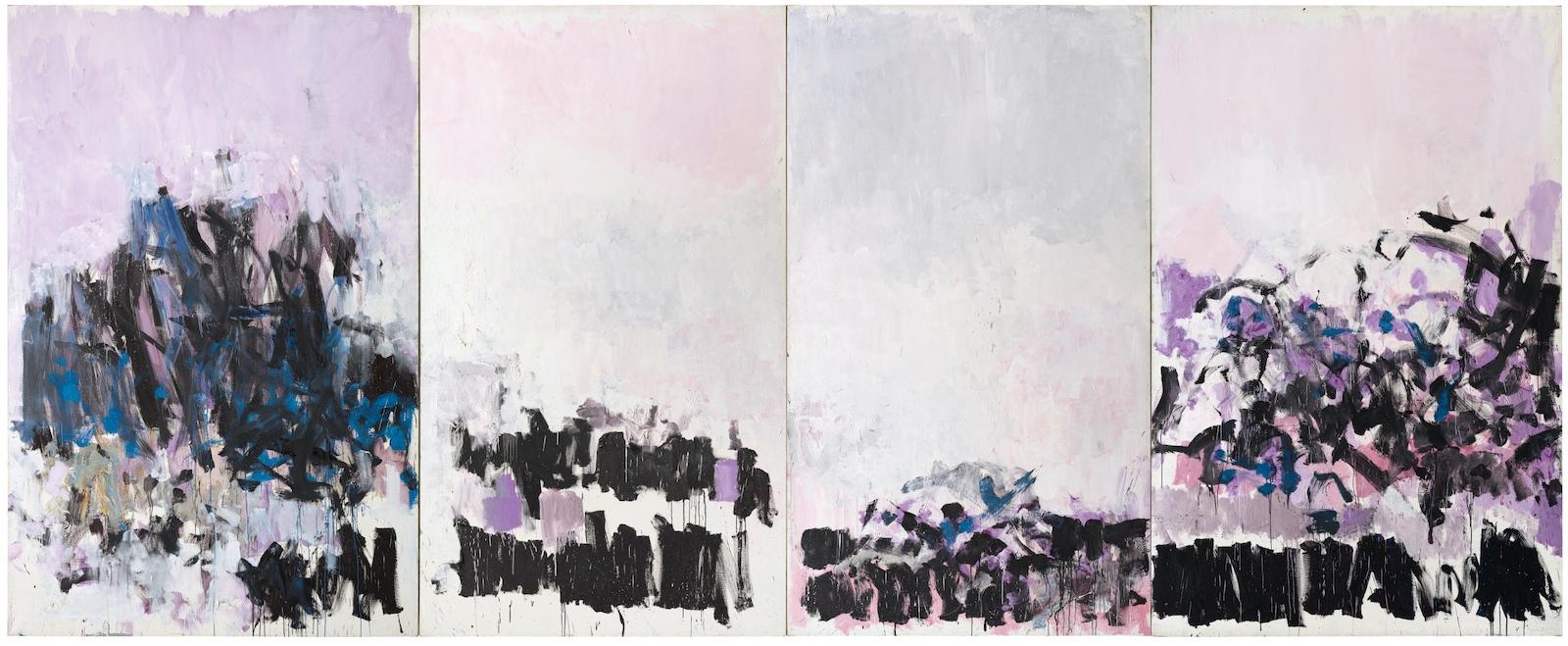Mitchell’s work was included in the 1951 9th Street Show, a landmark exhibition organized by dealer Leo Castelli featuring Pollock, de Kooning, and Hans Hoffmann. Mitchell was one of eleven female artists, along with Helen Frankenthaler, Grace Hartigan, Elaine de Kooning, and Lee Krasner, out of a total of seventy-four artists in that show. These women were referred to as “sparkling Amazons” by art critic Thomas Hess. In 2019, The Katonah Museum of Art paid homage to those female artists who were in the 9th Street Show.

Joan Mitchell, Bonjour Julie, 1971. Collection of the Art Fund, Inc. at the Birmingham Museum of Art.
In the macho, testosterone-driven New York art scene of the 1950s, abstract expressionist Joan Mitchell (1925-1992) was a key figure and one of the few women artists to be recognized by “The Club” a loose organization of artists that included Jackson Pollock, Willem De Kooning, Robert Rauschenberg, and Franz Kline. Most Club members, including Mitchell, had studios between 8th and 12th streets in lower Manhattan. Mitchell’s energy-filled paintings commanded the respect of the big boys. Her hard drinking, cigarette smoking, and social habits hanging out in Greenwich Village at the Cedar Tavern with artists and beat poets like Allen Ginsberg and Jack Kerouac were an accepted part of the mix.

Joan Mitchell in her Vétheuil studio,1983. Photograph by Robert Freson, Joan Mitchell Foundation Archives.

Joan Mitchell, Composition, 1969. Oil on canvas. 76.8 x 51.2 in.
The Whitney Museum held the last major Joan Mitchell exhibition in 2002. The rising interest in her work—reflected in the $14 million sale of a 1969 oil painting, Composition—at Art Basel 2018 signaled the time was right for a comprehensive reexamination of her life and oeuvre. The Baltimore Museum of Art (BMA), in collaboration with the San Francisco Museum of Modern Art (SFMOMA), is presenting a major Joan Mitchell retrospective set to open on the west coast this September, run through January 17, 2022, and then move on to Baltimore, where it will remain from March 6 to August 14, 2022.
This well-researched exhibition of over eighty works is co-curated by Katy Siegel, BMA Senior Programming & Research Curator and Thaw Chair of Modern Art at Stony Brook University, and Sarah Roberts, SFMOMA Andrew W. Mellon Curator and Head of Painting and Sculpture. Roberts notes, “After so many months of restriction due to the pandemic and the limitations of art online, Mitchell’s subtle surfaces and moving color will offer visitors a transporting visual experience and remind us of the irreplaceable and overwhelming power of seeing art in person.”
Mitchell was born in Chicago and educated at the Art Institute of Chicago, but it was her move to Brooklyn in 1947 and her trip to France the following year that had the greatest impact on her work. Roberts points out, “Her biography has the makings of a feature film, and it is easy to get caught up in the drama of her privileged upbringing, her friends and lovers, her sometimes outrageous behavior. But at the center of it all, driving her relationships and decisions, was her conviction in and dedication to painting.” We see Mitchell’s transition from academic figuration through cubism in the late 1940s before finding her unique voice in the 1950s in itchy-twitchy abstractions like the 1951 34th St. and 7th Ave., a painting that seems to dance across the canvas. By 1955 shapes have dissolved, taken over by the sheer energy of mark-making as seen in City Landscape, where a noisy tangle of color, devoid of green and surrounded by warm and cool cement-like grays, echos the barely controlled chaos of New York City streets.

Joan Mitchell, City Landscape, 1955. The Art Institute of Chicago.
“I am not a member of the make-it-ugly school,” Mitchell once told the late critic Irving Sandler in a 1957 interview for Art News. While large scale, multi-paneled works like the nostalgic violet and soft pink tones of La Vie en Rose, a 1979 landscape infused with light and air are easy on the eye, Mitchell does not shy away from grittier, more intimate work. Her explosive energy is kept in balance by a poetic lyricism, reflected in her life-long engagement with literature and verse. Mitchell’s mother was the poet Marion Strobel and the poets John Ashbery and Frank O’Hara had an influence on her work. The title of her 1957 painting, To the Harbormaster, comes from a poem by O’Hara.
In 1968 Mitchell moved to the small village of Vétheuil northwest of Paris where she continued painting until her death in 1992. Essays exploring Mitchell’s life and work are included in the extensively illustrated and deeply researched catalog accompanying the exhibition. A version of the exhibition will also open at the Fondation Louis Vuitton, Paris, in fall 2022.





























